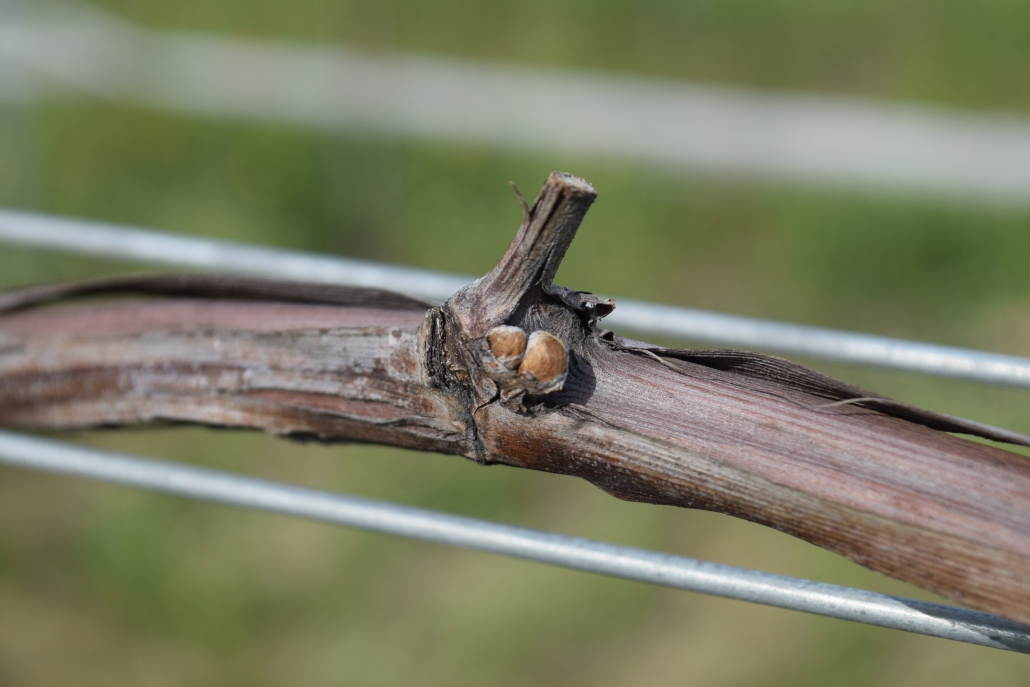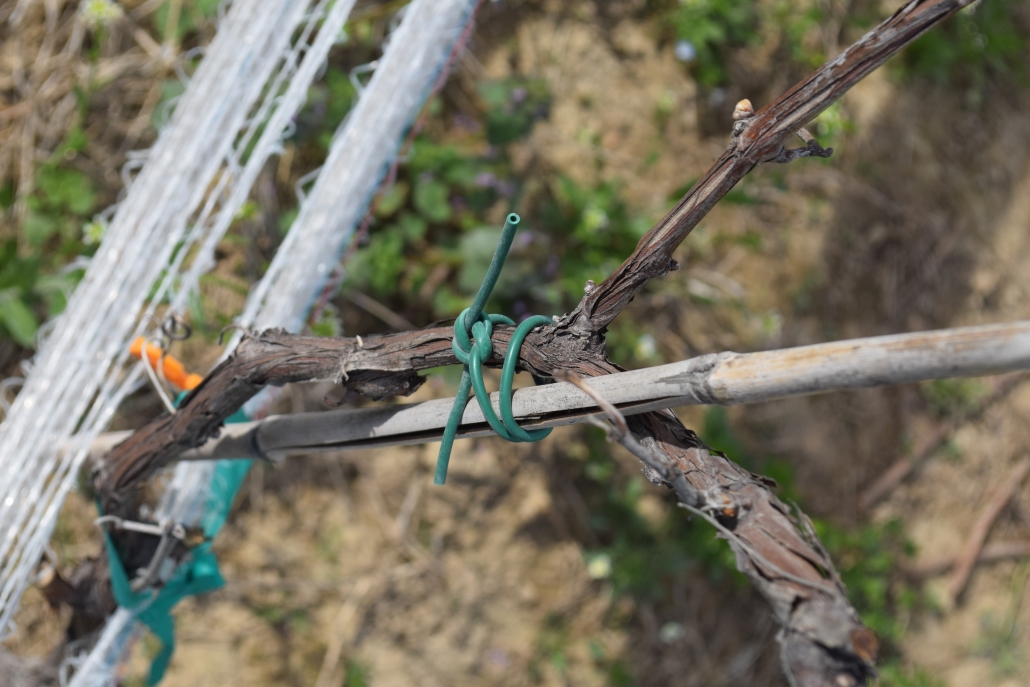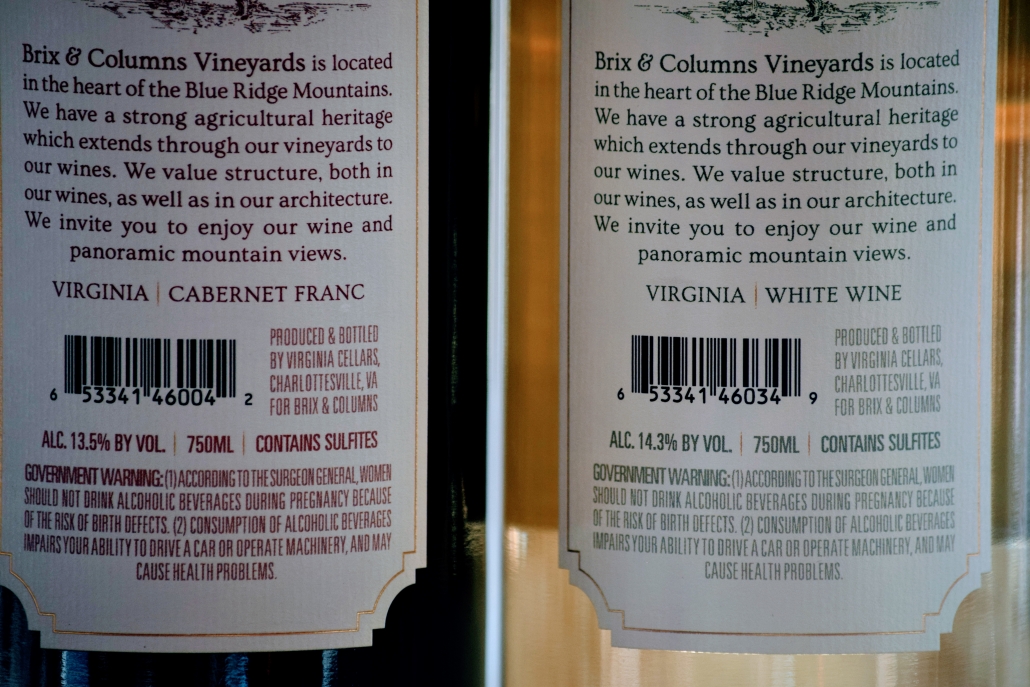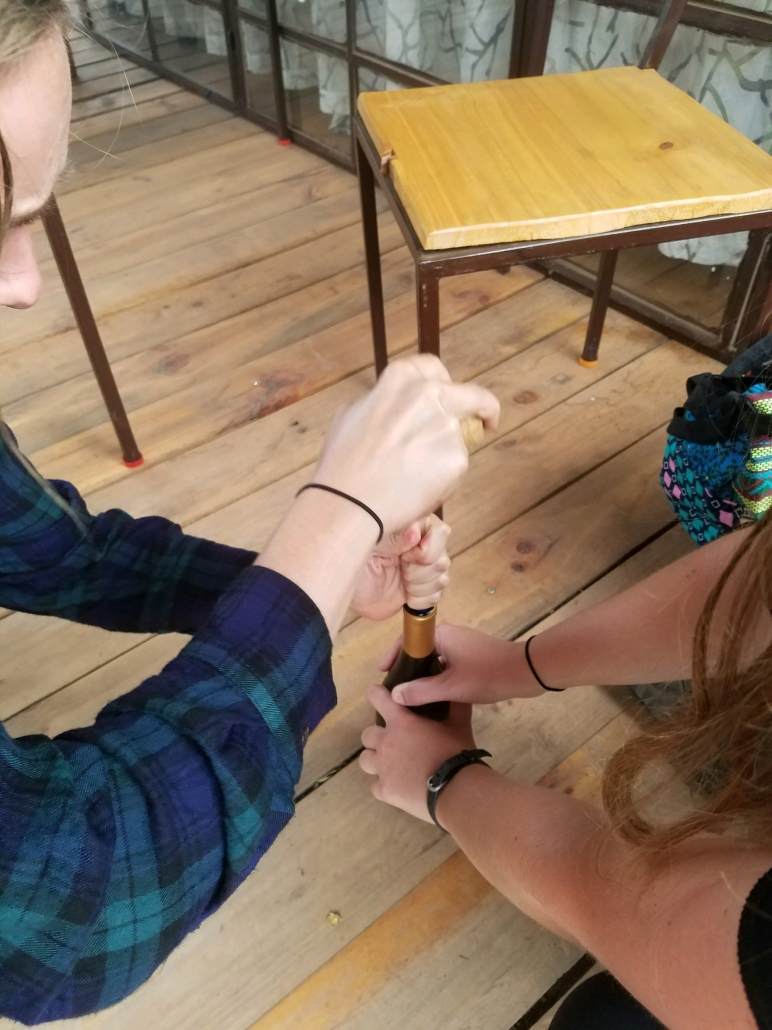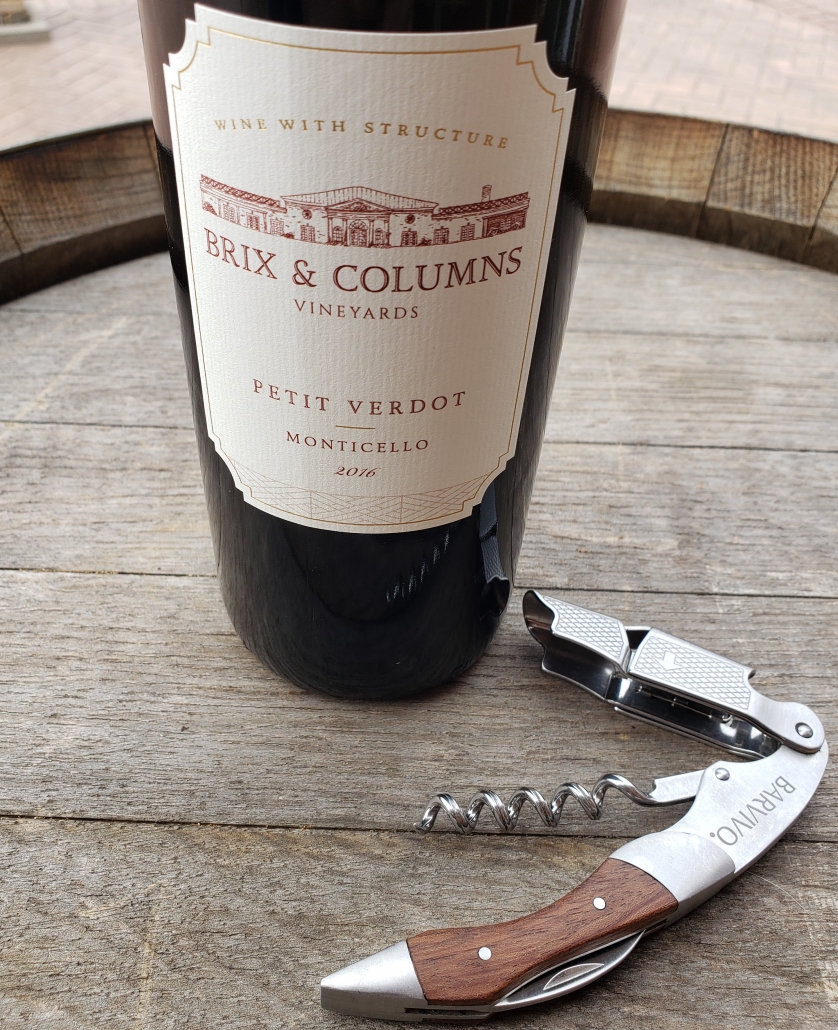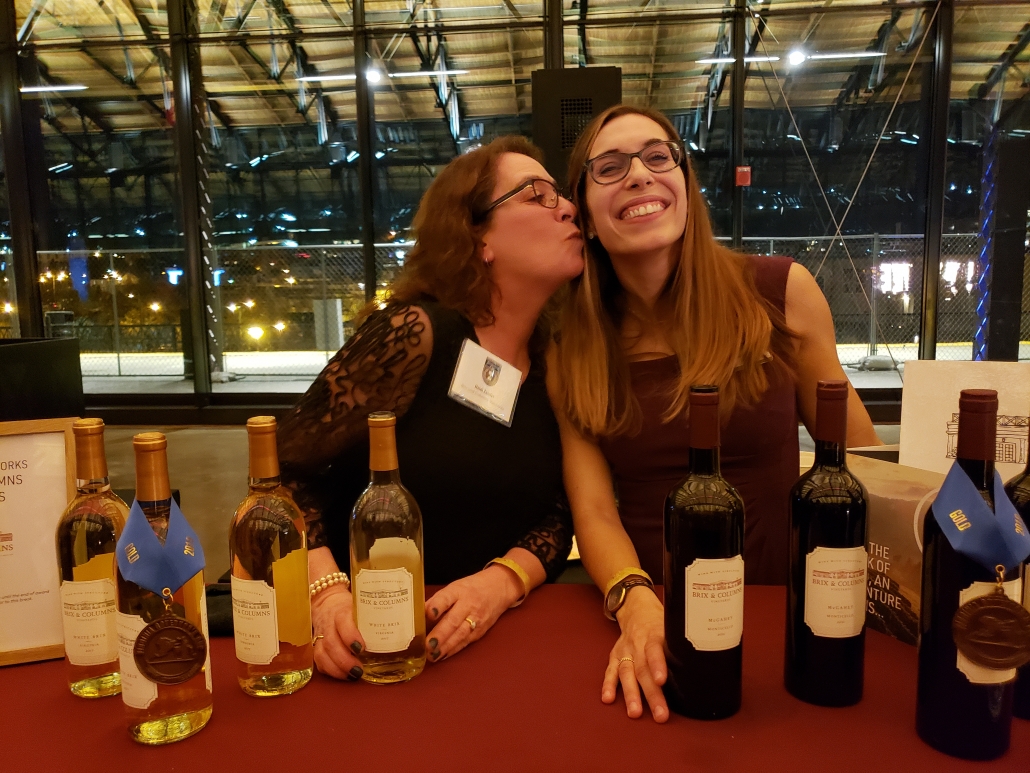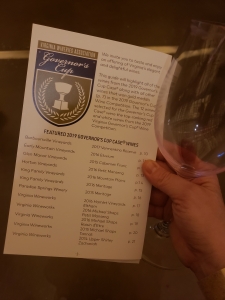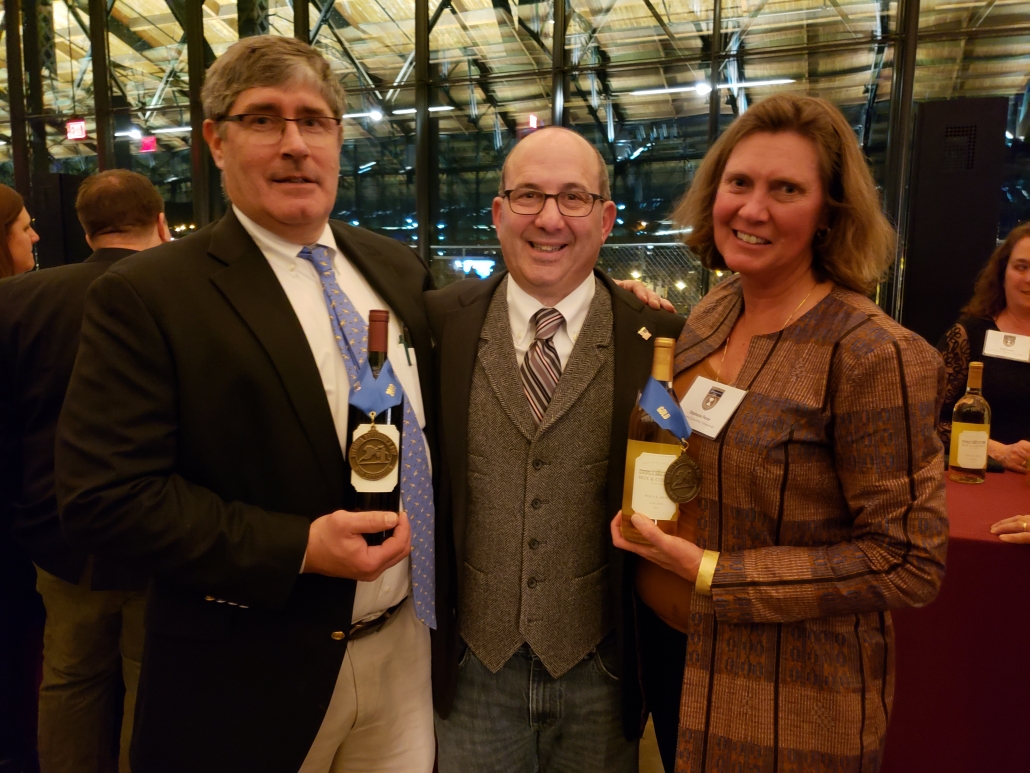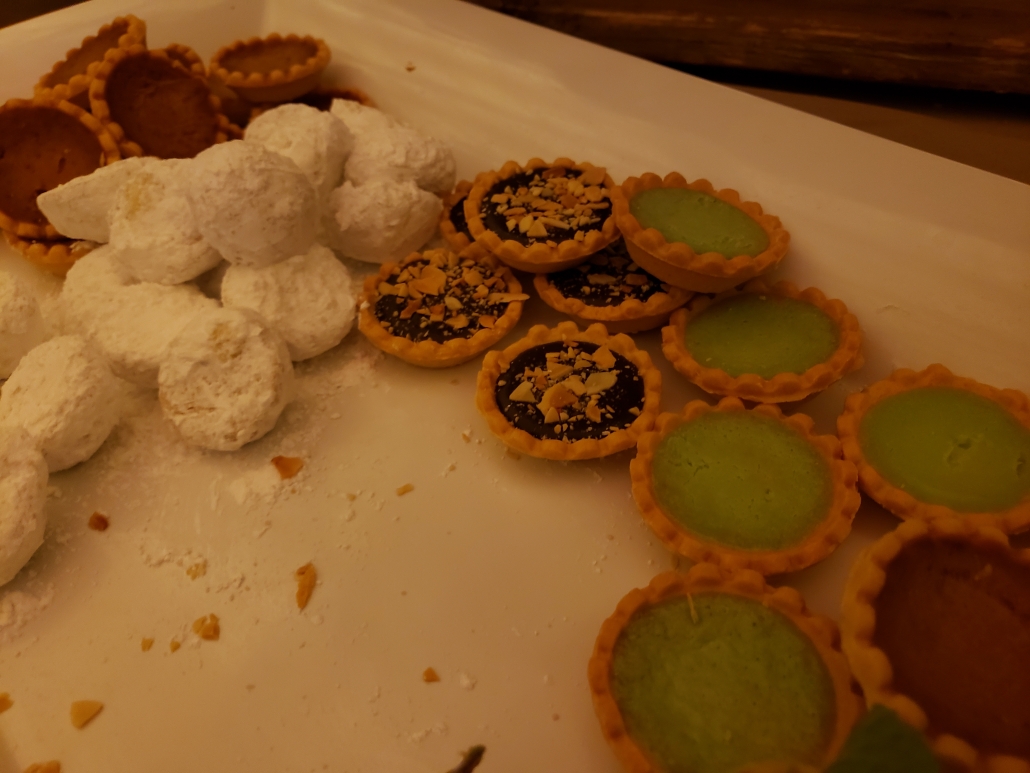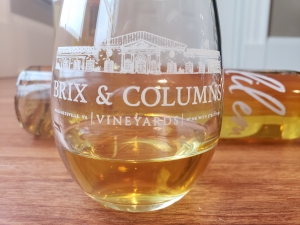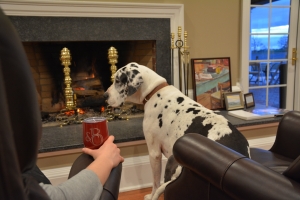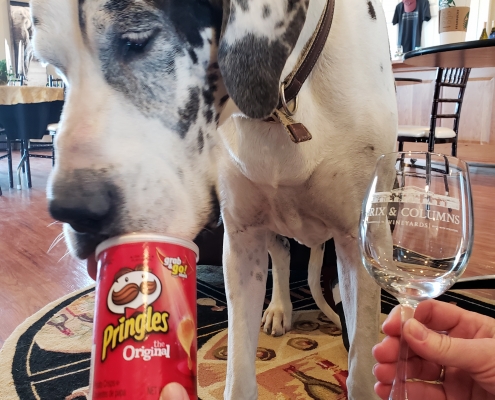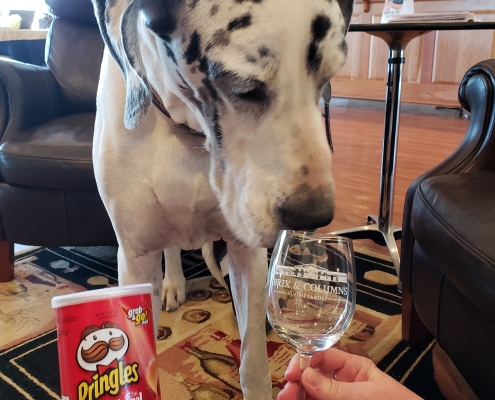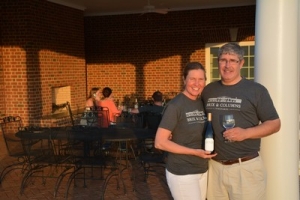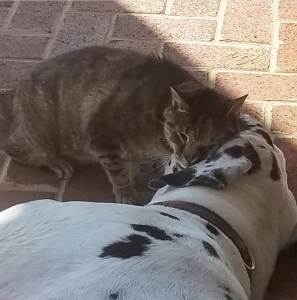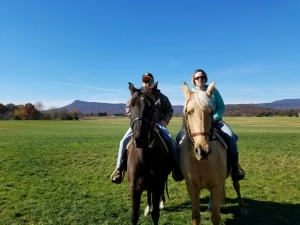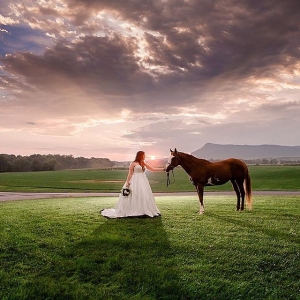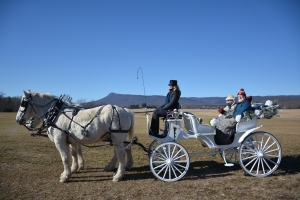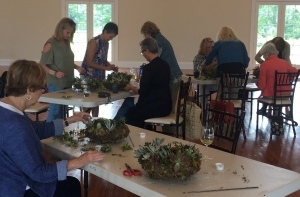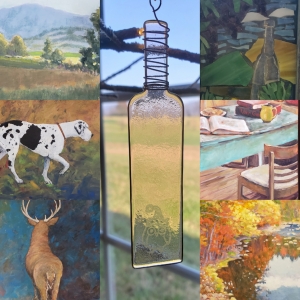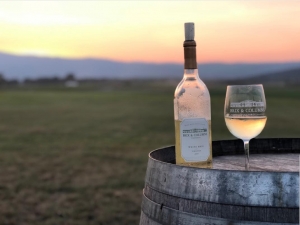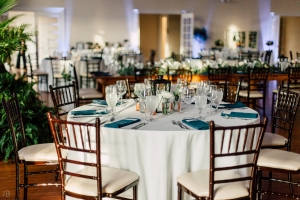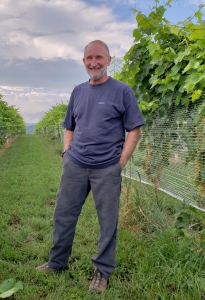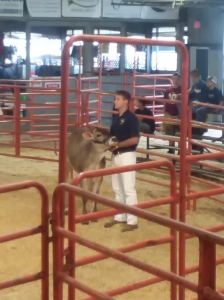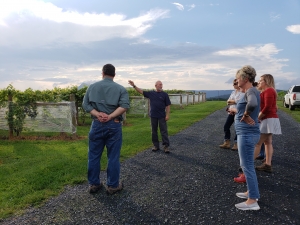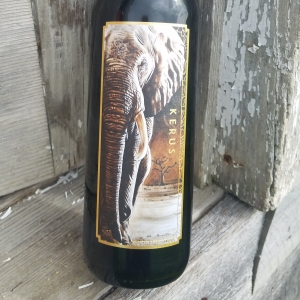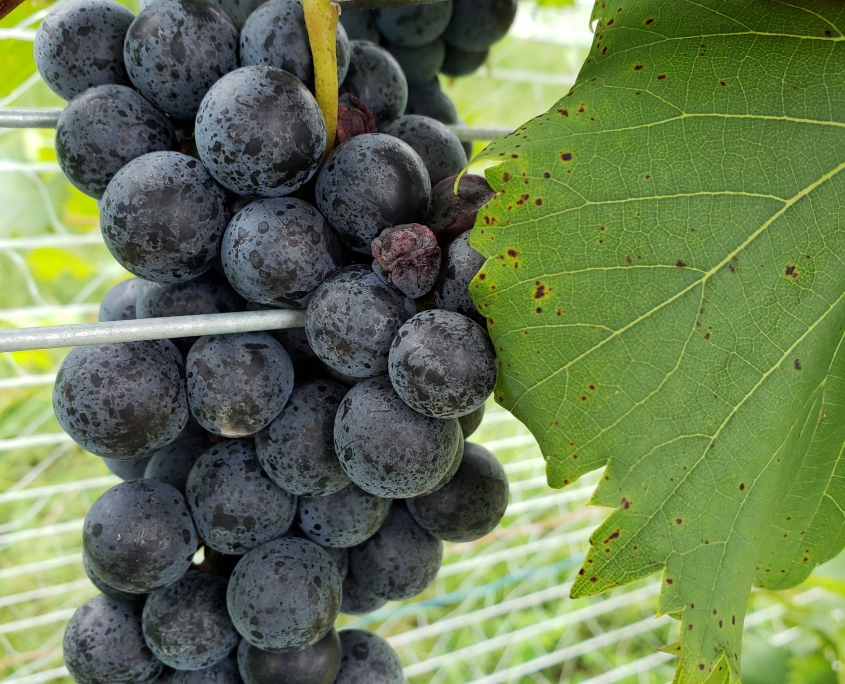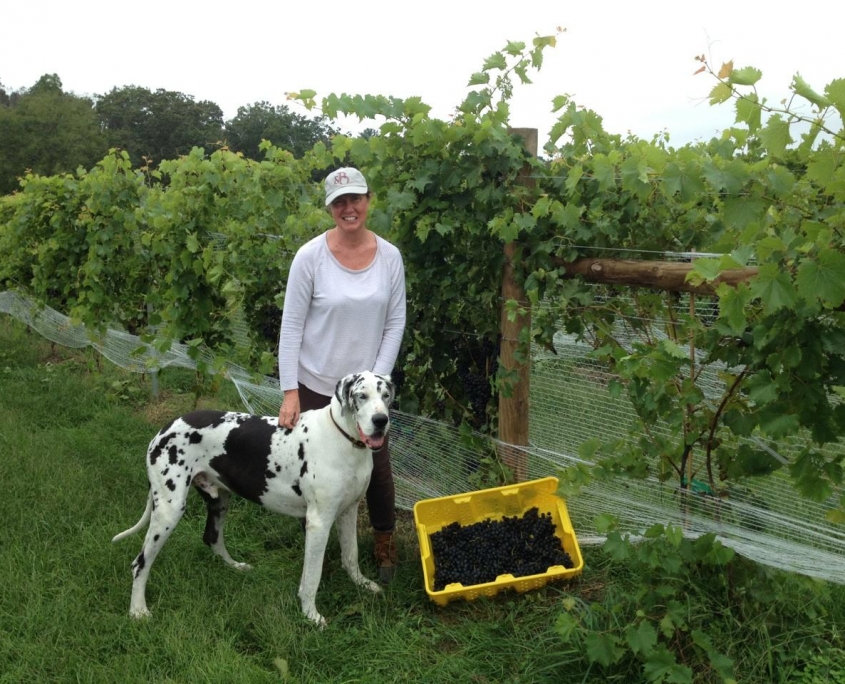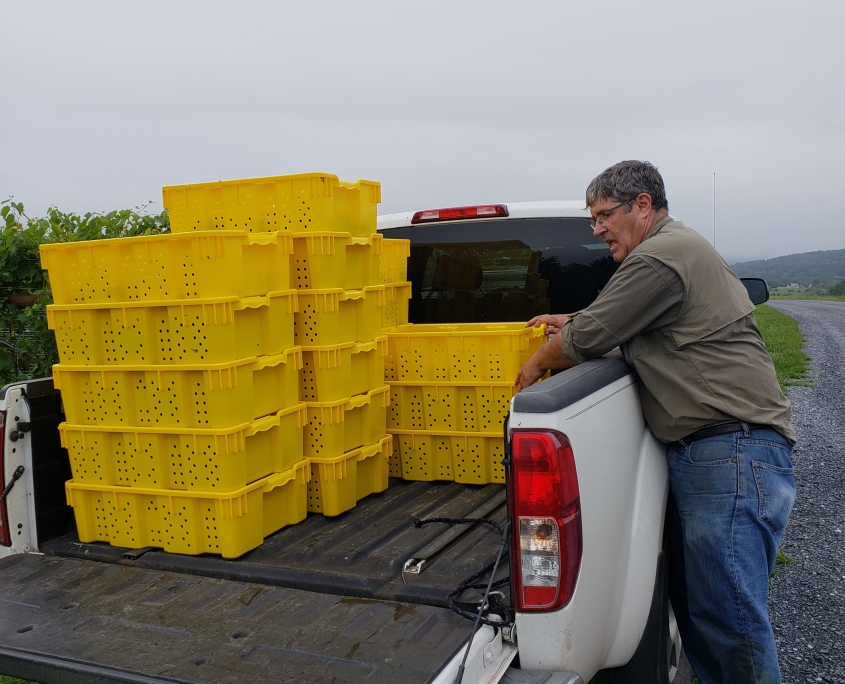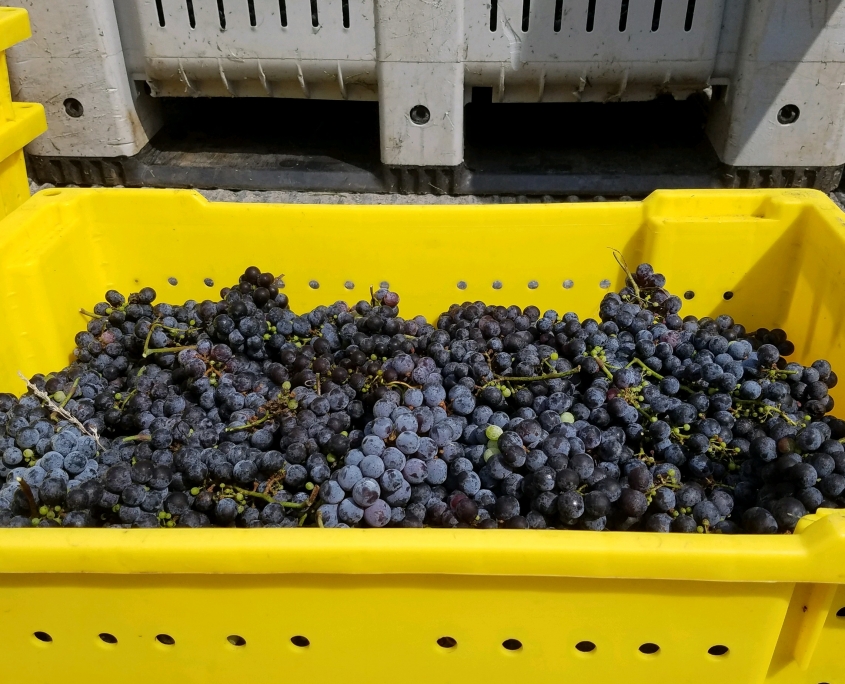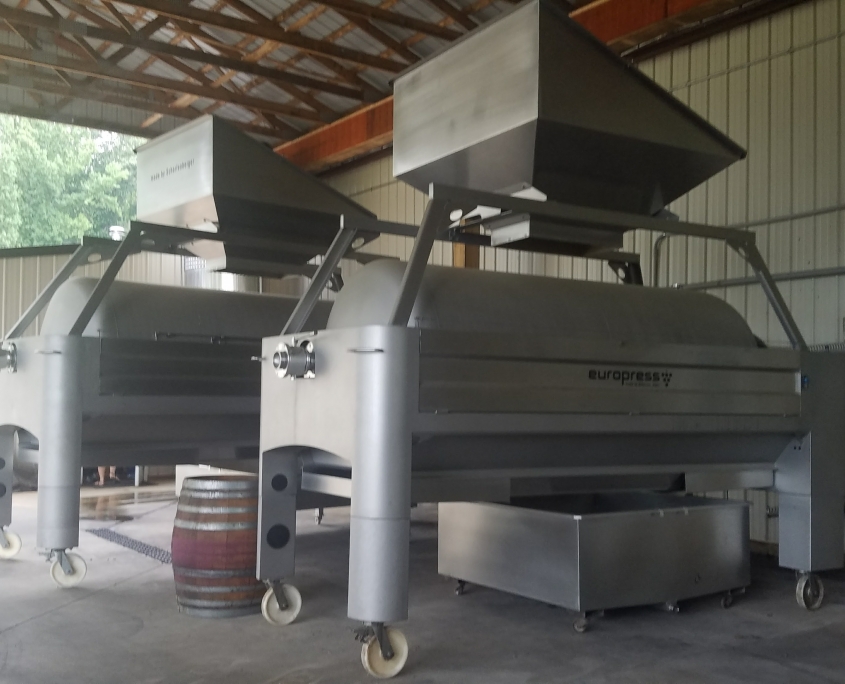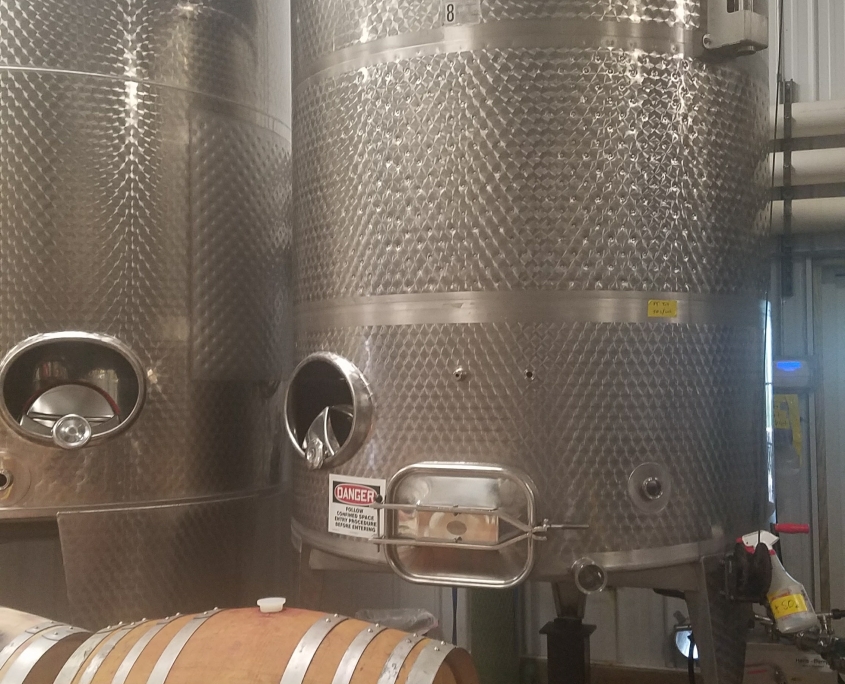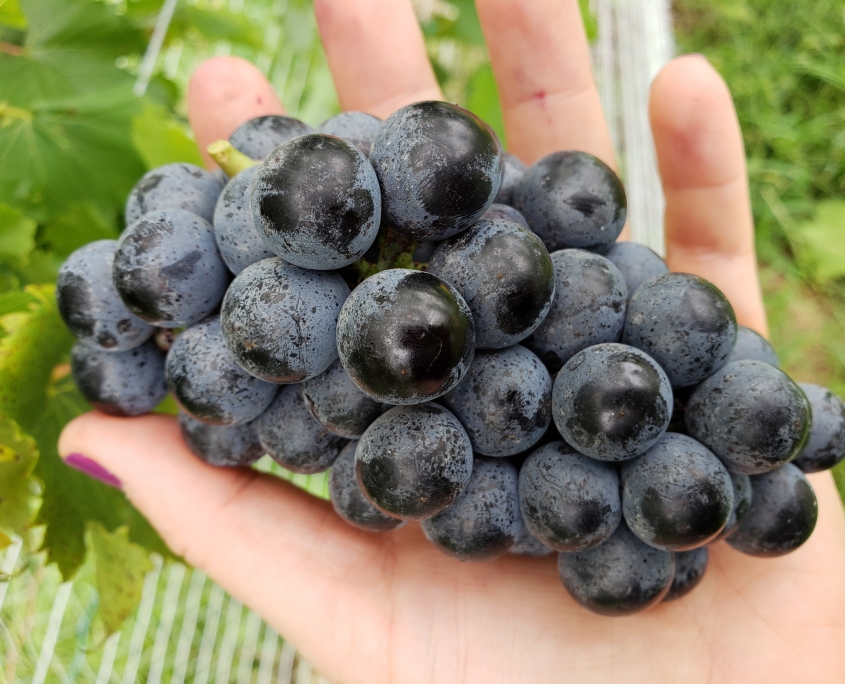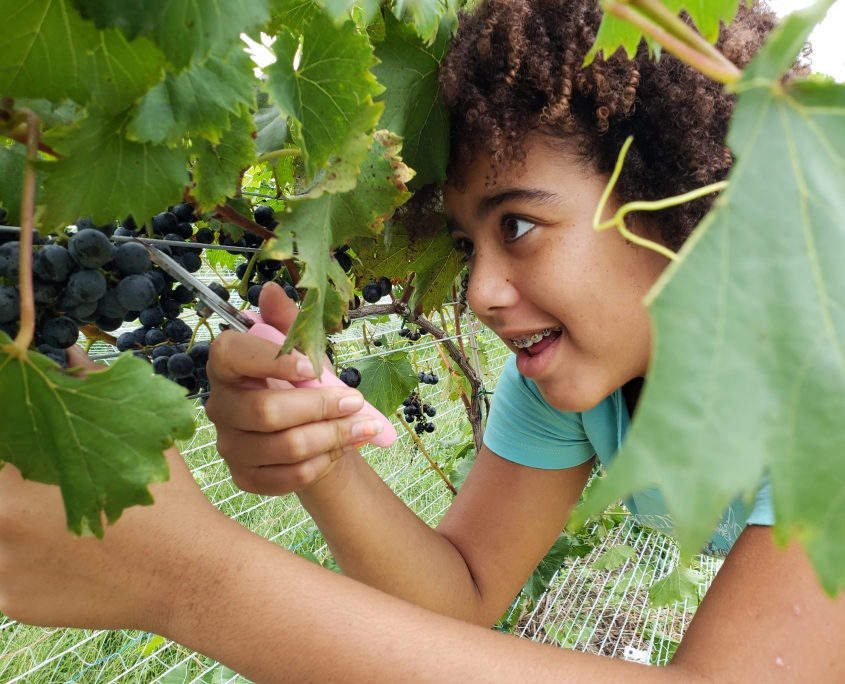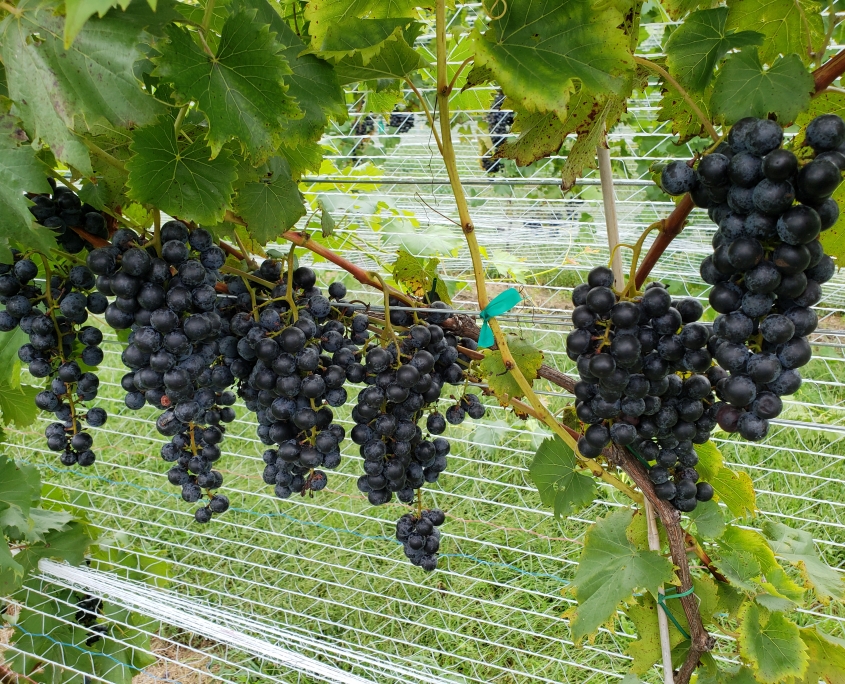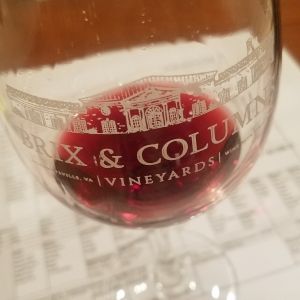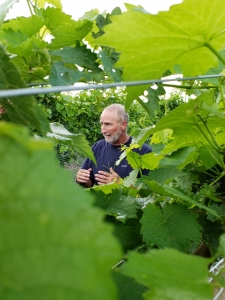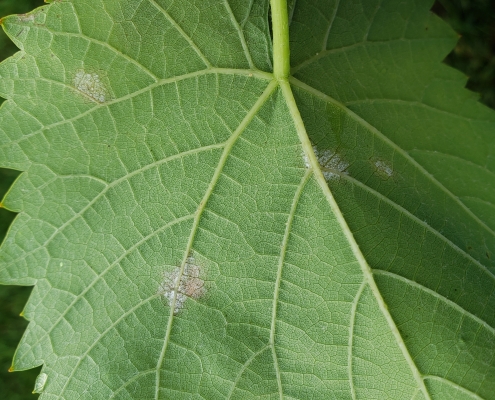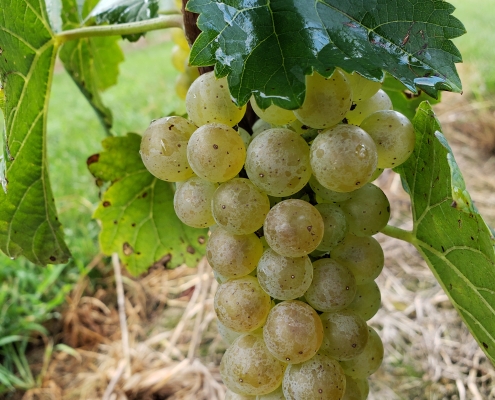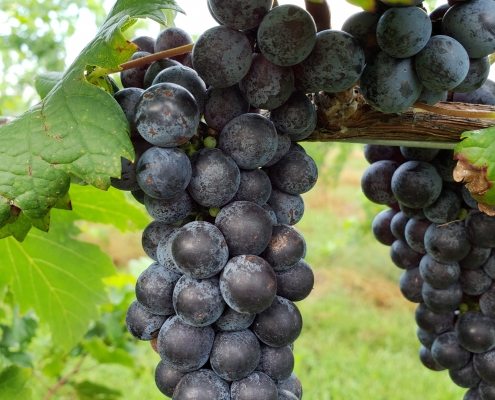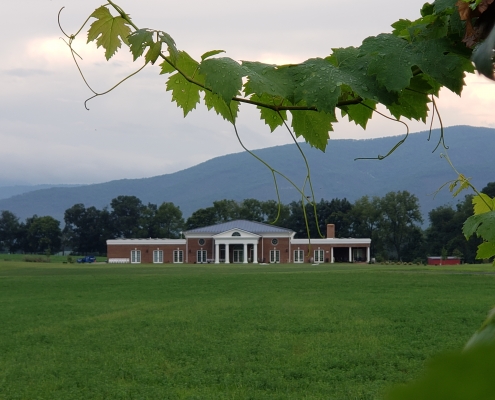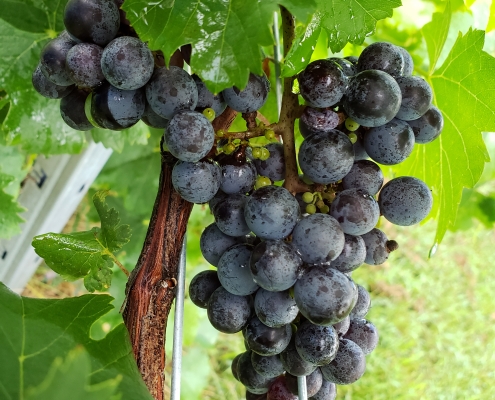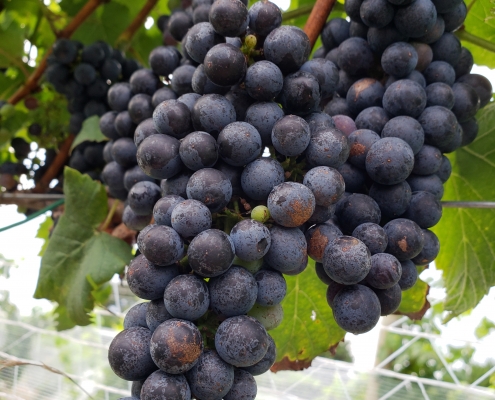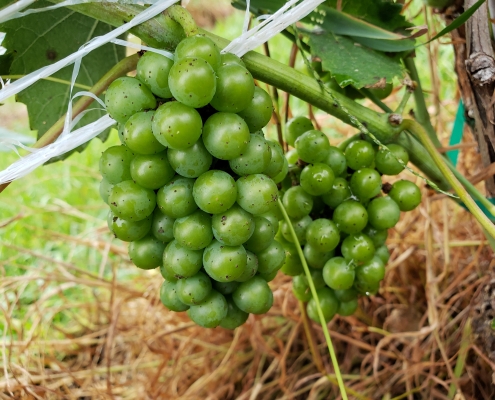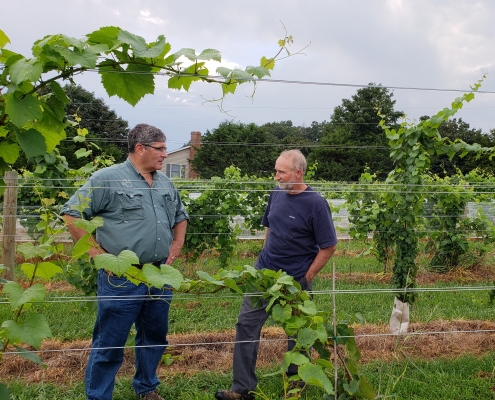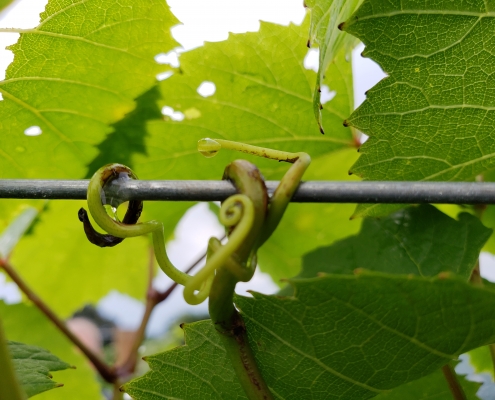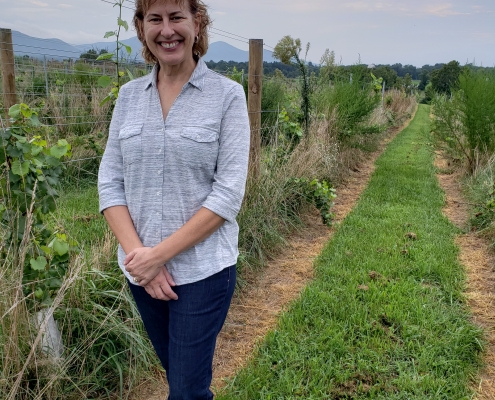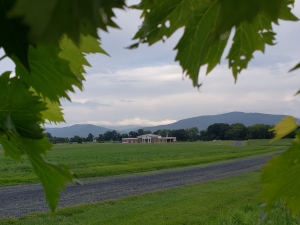I was sitting down in front of the fire with my mom and her laptop the other night, and as we were scrolling through Facebook, I noticed some of the gratitude posts that other folks were posting. That got me thinking that I have so much to be thankful for: I have two amazing parents, acres upon acres to run on, winery guests galore to greet everyday, and an abundant wealth of wine knowledge to share with all of you! As it goes, one thought leads to another, and it occurred to me that it has been ages since I wrote one of these buggers for you. October was a whirlwind and posting on the blog never managed to get crossed off the list. For that, I apologize, but I would also like to share with you my own personal gratitude post.
Mom and Dad – I already talked about how great my parents are, but I think they deserve another mention. Without them, I never would have had the chance to meet any of you! When they started the wedding venue, that precursored the birth of this vineyard, they set a ball in motion that led to the creation of this fun venue space located in what some might say is the middle of nowhere. In doing this, they have created a space that has led to countless unions, evenings spent with family, nights filled with food and fun, live music performances, Capernaum proms, retirement parties, Christmas celebrations, paint nights, terrarium creations, and so much more, but most importantly, the dream of what this building could be has led to the formation of so many very special friendships, and that is what I am most grateful for.
Ryland – Even though he is my nephew, Ryland is the best friend I could ask for. We run and run and sniff out whole heaps of trouble. I wish he lived here all the time, but I know Taylor and Laura would miss his presence in their Richmond home. Dogs just add incredible value to your life!
Mac & Olive – These are my kittens. I say kittens, but they have actually been here for 11 years now, and they keep me wonderful company. Sometimes I go outside in the mornings to lay in the sun, and they give me ear rubs to my heart’s content. I don’t even have to fight them for my food – mostly because I gobble it down as soon as Mom dumps it into my bowl.
Karen & Scott Weeks – What were once our neighbors have quickly grown into our friends. These guys take time every weekend to ride their horses down to see me, and I love seeing their quivering noses and sniffing their barn smells (the horses that is, not Karen and Scott).
Brides – Every once in a while a bride will ask me to join them in a photo, and that makes me feel ultra special. My favorite picture recently was when a bride came in with her horse to pose at sunset in front of the peak. (Did I already mention I like horses? It might be because I am almost a miniature horse myself :-))
Steve & Gina – If you know me, you know I love warm fires, and these folks are the ones I have to thank for keeping the B&C fireplace stoked during those busy evenings when Mom and Dad can’t tend it. These two have been some of our biggest fans since day one, and we always look forward to seeing them walk through the door on Friday evenings with dinner and reading material in hand.
Amy & David – Can a dog ever have too many toys? If you ask me, the answer is always no. Luckily for me, these two believe the exact same way. One of my favorite new toys they have gotten me is the green dragon. I could count how many times I’ve chased it around the rooms down here, but I would run out of toes! Whether they venture out on a Sunday afternoon or a random weekday, we are honored to have become a staple of their week!
Rachel – I can be a little stressed sometimes (mostly just from the idea of so much food coming through that I am not allowed to eat), and Rachel makes sure to visit twice a week to keep me relaxed and meditated. Sometimes she even allows me to teach the class – I am a pro at down dog! If you haven’t had a chance yet, please come join one of her classes on Wednesday @ 5:15p or Saturday @ 10:00a.
Wendee & Morina – Even though Zumba hasn’t taken place in a while, whenever we did have it, I always had fun joining in. This old dog can still shake a leg! Keep an eye out for Zumba making a reappearance in the spring.
Mikey – Mikey, Mikey, Mikey. I would say I am grateful for his yummy food, but that wouldn’t be exactly true. What is true is I am grateful for the yummy smells his food brings, and I hear that other people (who are actually lucky enough to eat it) are grateful for his cooking at our wine pairing dinners. Did I hear Mom say that we have something family-style planned for December? I will be stealthily scouring for dropped morsels!
Tamara – Tamara does the most amazing botanical creations I have ever seen; now granted, I don’t get off the farm much, but I think her arrangements are creative, unique, and innovative. What I love most is that she never puts them anywhere that I can knock them over with my tail. Lucky for all of you readers, Tamara offers classes at our vineyard every few months. The next one coming up is the Christmas Wreath Workshops. You can find more details on our events page.
Sharon, Dietrich, and Brydgeworks – These are the incredibly talented guys and gals who have supplied our tasting room with the locally inspired artwork that decorates our walls. There is one particular painting that I think is the most handsome of all, but I am not going to tell which one that is on here; maybe you can come in this week to make a guess?
Sunsets over the peaks and Friday night regulars and the musicians who come to serenade me – Is there anything more beautiful than watching the sunset over the Massanutten Mountain when you are surrounded by people you love? I haven’t discovered anything that beats it yet, and I think I must be the luckiest dog in the world to be able to share the beauty with all of the ladies and gentlemen who come out to see me most Fridays!
Joyce – Each week we get a visit from a woman for whom everyone is grateful. Without her, I wouldn’t have sparkling floors to walk on and doors to smudge up by pushing them open with my nose. Every week, whether we have had a weekend filled with events or not, Joyce comes in and cleans the building. She sweeps, mops, and scrubs to make it all brand new for the next round of festivities!
Gene – This is one man that I absolutely love running through the vines to find. Gene is out at the crack of dawn working in the fields to do all of the things that vine management entails: pruning, trimming, weeding, inspecting, measuring, cultivating, tying, leaf pulling, mowing, harvesting, and so, so, so much more. He keeps our vines looking incredible and he learns more each day and is so generous in teaching us all of what he knows. I don’t know what we would do without him!
Jacob – Now this guy has been working here for years! Living right down the road made us a very convenient spot to start his first job, and lucky for us, he loves the world of farming. Jacob takes care of most of the mowing around the property and is a godsend when it comes to setting up for weddings. He recently raised a steer in our barn, and we were honored to purchase it from him at the Rockingham County Fair. We are incredibly grateful for his willingness to work hard, but even more so, we are honored to be witness to him growing up into such an outstanding young man.
Staff – Do I have the most awesome co-workers or what? They always make sure to look out for me and ensure I can easily get in and out of the tasting room when I need to, they tell me where Mom has gone when I can’t find her, they wipe my slobber when it needs wiping, and they always make sure to spread my bed out in the corner. Of course, sometimes they remind people that they aren’t supposed to feed me, but I try not to hold that against them! Most days, when I come to work, I lay on my bed that is near the tasting bar, and I hear them share some of the facts that I’ve written about in my blog, so I know they are fans of mine, too! 🙂 Recently we have had two more lovely ladies join our staff, and I am always excited to see Kiera and Sarah each time they come in. I have heard through the grapevine that Donna is going to be coming back in December, and I am also looking forward to Kelly getting back on a more regular basis after the holidays. I especially love that Heidi brings Hazel by to see me at least once every week, and I am honored that Sherry named the dog statue in her hallway after me. When showing appreciation for the staff, I would be remiss if I left out Erin. She has been here since we opened, so you probably are familiar with her face, but you likely don’t know that she is the one who helps me type all of these. My paws aren’t quite as nimble as they used to be and these keyboards are so doggone small that if it wasn’t for her, my blog posts would be more “lijsdesfjiogerjioger” and less “Winston here!”
Shout out to cream cheese – If it wasn’t for this creamy deliciousness, there is no way Mom could get me to take the medicine I need to stay healthy enough to visit with you all! Side note: this medicine is also why it is so important that you don’t feed me everyday people food. It makes me sick, and then I can’t keep down the proper dosage. I hate the days that I am not feeling well enough to come down to greet everyone!
Kerus – Is there anything in life that warms a heart more than giving back to others? I am grateful that Mom and Emma got a chance to work with Kerus Foundation a few years ago because that mission trip led to the partnership we have today. For those who don’t know, every bottle of Kerus wine purchased gives $5 to this foundation. Kerus is a Greek word that means to do something with all of your heart, and that is exactly what Jennie and Marcia have accomplished with their foundation. They do global AIDS education – focused mainly in South Africa – and our sales have raised $5,000+ for them since we started selling it in April. Their work has been so successful that the South African government is now partnering with them, and we are honored and grateful to help them on their mission.

